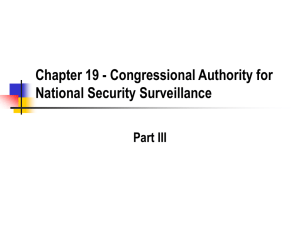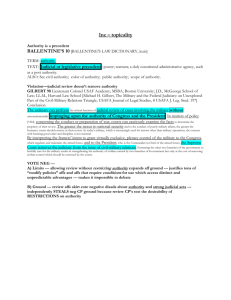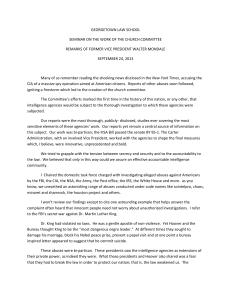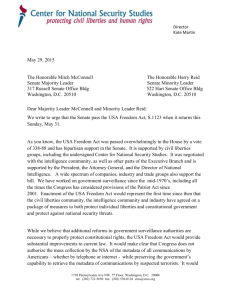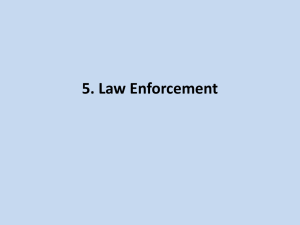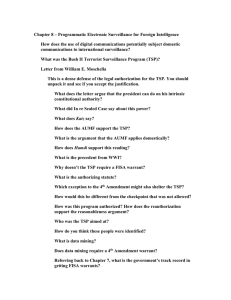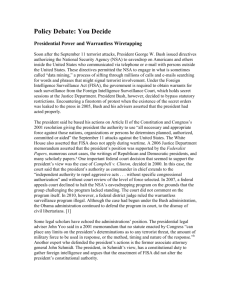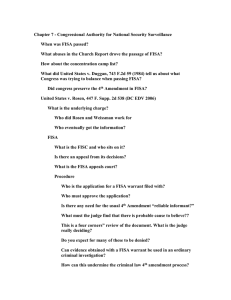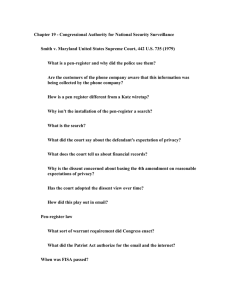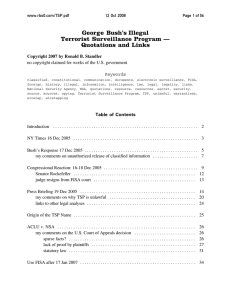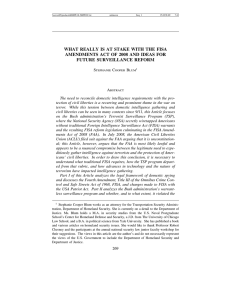Chapter 22 – Programmatic Electronic Surveillance for Foreign Intelligence
advertisement
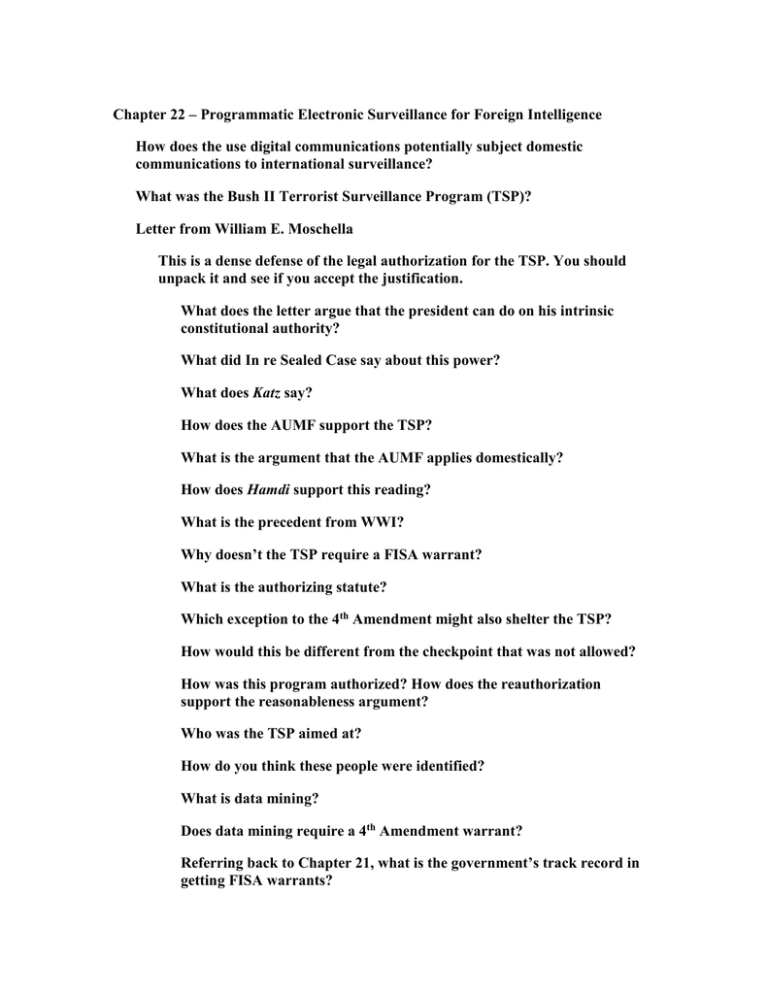
Chapter 22 – Programmatic Electronic Surveillance for Foreign Intelligence How does the use digital communications potentially subject domestic communications to international surveillance? What was the Bush II Terrorist Surveillance Program (TSP)? Letter from William E. Moschella This is a dense defense of the legal authorization for the TSP. You should unpack it and see if you accept the justification. What does the letter argue that the president can do on his intrinsic constitutional authority? What did In re Sealed Case say about this power? What does Katz say? How does the AUMF support the TSP? What is the argument that the AUMF applies domestically? How does Hamdi support this reading? What is the precedent from WWI? Why doesn’t the TSP require a FISA warrant? What is the authorizing statute? Which exception to the 4th Amendment might also shelter the TSP? How would this be different from the checkpoint that was not allowed? How was this program authorized? How does the reauthorization support the reasonableness argument? Who was the TSP aimed at? How do you think these people were identified? What is data mining? Does data mining require a 4th Amendment warrant? Referring back to Chapter 21, what is the government’s track record in getting FISA warrants? Why did the AG say the Bush administration did not get a FISA warrant for the TSP? Why not use the FISA 72 hour grace period? What did Office of White House Counsel (OLC) say about the TSP and the 4th Amendment? Can you make an administrative search argument to support the TSP? TSP was not reauthorized. How could the program be sheltered under FISA? Think about the FISA facilities provisions – could a FISC judge rule that the telcom switches in the US are FISA facilities and thus that the government can watch them with a single FISA warrant? What about the traffic that does not concern terrorism? Al-Haramain Islamic Foundation v. Bush, 451 F. Supp. 2d 1215 (D. Or. 2006), rev’d, 507 F.3d 1190 (9th Cir. 2007) How did plaintiffs originally get standing? Why was standing ultimately denied? The standing problem – if no one can get standing because no one can prove they were listened in on, is there any other avenue for redress? There are also federal criminal penalties – why are these unlikely? Did Obama investigate the Bush II DOJ? Why not? FISA Amendments Act (FAA) How does this free the President from the need for individual FISA warrants for programmatic surveillance? What does the court approve? Does the court ever see the details of the plan? What are the limits on judicial review? In re Directives [Redacted Text]*, 551 F.3d 1004 (FISCR 2008) Who is challenging the surveillance directive? What did the FISC rule? Like all decisions since Matthews, this is a balancing decision – how does the court rate national security on one side of the scale? What is the key word in establishing whether the FISA procedures meet the 4th Amendment? What did Lincoln tell us about the constitution versus the nation? What did the Court say about the claim that In re Sealed Case required that FISA procedures be the equivalent of a 4th Amendment warrant? Do we know what procedures the court is reviewing? What does the AG have to determine to use these procedures? What did the DOD “regulations” require? Who is the judge of those representations? Does the court recognize the potential for error? Does the court see that as a reason to require more 4th Amendment formality? What is incidental collection of information? Why does the court reject this as a problem? Does the court, or anyone other than the Executive have the ability to verify these representations about the use of incidental information? Thought question – given the rejection of the primary purpose doctrine, how could incidental information be converted into intelligence that would be retained? What is the court’s conclusion about the reasonableness of the procedures? Notes Determining the location of a person being electronically surveilled was easy when FISA was written. How has this changed in the digital world? Are packet systems tied to physical locations, i.e., does digital addressing unambiguously know where a packet came from? In thinking about this question, think about whether there are systems that can be used to confuse or mask the origin of digital traffic? When these data streams are being analyzed, do you think that the system first determines if the traffic is from a proper foreign source as described in the protocol, and then looks at the data? Can you get pattern information and still comply with minimization? What was the caveat about minimization if you found evidence of criminal or national security import? How much info can you get without triggering FISA or 4th amendment review? What is the modern equivalent of pen registers? What can you get from email headers and tweet addressing? What about the servers that the information flows through? If you tweet or call from your cell phone, what location information is available? The FFA now applies FISA protections, such as they are, to US persons abroad. How much protection is this? What is a Terry stop? Why are people objecting to these being used in NYC? Should electronic surveillance be seen as a version of a Terry stop? The FAA was argued this term in the United States Supreme Court.
